St. Augustine Seville grass is a popular choice for homeowners in warmer climates due to its lush, dense, and vibrant green appearance. However, one common issue that can mar the beauty of a St. Augustine Seville lawn is the appearance of brown dead spots. These spots not only detract from the lawn’s aesthetic appeal but can also be a sign of underlying problems that, if left untreated, could spread and compromise the overall health of your lawn.
In this guide, we’ll explore the most common causes of brown spots in St. Augustine Seville lawns, along with effective treatments and preventive measures to help restore your lawn to its full, green glory.

- Identifying the Cause of Brown Dead Spots
Before you can effectively treat brown spots on your lawn, it’s crucial to identify the cause. Brown spots can result from a variety of issues, including fungal diseases, insect infestations, improper watering, or nutrient deficiencies. Each problem has its own set of symptoms and requires specific treatments, so correctly diagnosing the cause is essential.
Common Causes of Brown Spots on St. Augustine Seville Lawns:
- Fungal Diseases: Fungal infections, such as brown patches and grey leaf spots, are prevalent in St. Augustine grass and can cause circular patches of brown, dead grass.
- Pests: Chinch bugs, grubs, and sod webworms are common pests that feed on the roots and stems of grass, causing it to turn brown and die.
- Improper Watering: Both overwatering and underwatering can lead to brown spots, as St. Augustine grass requires consistent but moderate watering.
- Nutrient Deficiencies: A lack of essential nutrients, especially nitrogen, can cause the grass to yellow and eventually turn brown.
- Thatch Buildup and Soil Compaction: Excessive thatch and compacted soil prevent roots from accessing necessary water, nutrients, and oxygen, leading to brown spots.
By closely examining the symptoms and environment of your lawn, you can narrow down the possible causes and take the appropriate action.
- Treating Fungal Diseases in St. Augustine Seville Grass
Fungal diseases are among the most common causes of brown spots in St. Augustine Seville grass. Here are some of the primary fungal diseases to look out for and how to treat them:
Brown Patch (Large Patch)
Brown patch, also known as large patch, is caused by the fungus Rhizoctonia solani. This disease is especially common in the fall and spring when temperatures range between 65-85°F and the soil is moist.
Symptoms: A brown patch causes circular patches of brown grass, often with a yellow “halo” around the edges. The affected grass may feel soft and appear water-soaked.
Treatment:
- Fungicides: Apply a fungicide specifically formulated for brown patches, such as one containing azoxystrobin, propiconazole, or myclobutanil.
- Watering Practices: Avoid watering in the late afternoon or evening. Water early in the morning so that the grass blades can dry throughout the day.
- Improving Air Circulation: Trim back shrubs or trees that may be restricting airflow over the lawn, as good air circulation can help prevent fungal growth.
Gray Leaf Spot
Grey leaf spot is another fungal disease that affects St. Augustine grass, particularly in warm, humid climates. This disease is caused by Pyricularia grisea and often appears during the summer months.
Symptoms: Gray leaf spot causes small, greyish-brown spots on grass blades, which can merge and cause large dead patches.
Treatment:
- Fungicides: Apply a fungicide with active ingredients such as thiophanate-methyl or trifloxystrobin.
- Nitrogen Management: Avoid excessive nitrogen fertilization, as it promotes rapid, weak growth that is more susceptible to grey leaf spots.
- Mowing: Mow carefully to avoid spreading fungal spores, and avoid mowing when the grass is wet.
- Controlling Pests That Cause Brown Spots
Several pests can cause brown spots on St. Augustine Seville lawns by feeding on the grass or damaging its root system. Here are some of the most common pests and how to manage them.
Chinch Bugs
Chinch bugs are small insects that suck the sap from grass blades, causing the grass to turn yellow, then brown, and eventually die. They are particularly problematic in hot, dry conditions.
Symptoms: Chinch bug damage appears as irregularly shaped patches of yellow or brown grass that spread over time.
Treatment:
- Insecticides: Use an insecticide labelled for chinch bugs, such as bifenthrin or cyfluthrin. Apply according to the manufacturer’s instructions.
- Regular Mowing and Raking: Keep your lawn tidy to discourage chinchbug infestations.
- Watering: Ensure consistent watering, as chinch bugs are attracted to dry, stressed grass.
Grubs and Sod Webworms
Grubs are beetle larvae that feed on grass roots, while sod webworms are caterpillars that chew on grass blades. Both pests can cause dead patches if not controlled.
Symptoms: Grub damage often results in grass that feels spongy or can be pulled up easily. Sod webworm damage appears as small, ragged patches of brown grass.
Treatment:
- Grub Control: Apply a grub control insecticide, such as one containing imidacloprid or chlorantraniliprole, in late spring or early summer when grubs are young.
- Nematodes: Beneficial nematodes can also help control grub populations naturally.
- Specific Insecticides for Caterpillars: Use a caterpillar-specific insecticide if you suspect sod webworms.
- Proper Watering Practices for St. Augustine Seville Grass
Watering plays a vital role in preventing and managing brown spots. St. Augustine Seville grass requires a moderate amount of water, and both overwatering and underwatering can cause problems.
Tips for Correct Watering:
- Water Deeply but Infrequently: Rather than light, frequent watering, give your lawn a deep soak once or twice a week. This encourages deep-root growth and improves the grass’s resilience to drought.
- Early Morning Watering: Water in the early morning to allow the grass to dry by afternoon, reducing the risk of fungal diseases.
- Adjust According to Weather: Increase or decrease your watering schedule based on weather conditions. During rainy periods, you may not need to water at all, while hot, dry spells might require more frequent watering.
- Fertilizing and Addressing Nutrient Deficiencies
Nutrient deficiencies, particularly nitrogen deficiency, can cause St. Augustine Seville grass to yellow and eventually turn brown. A balanced fertilization schedule is essential for maintaining the health of your lawn.
Fertilization Tips:
- Apply a Balanced Fertilizer: Use a slow-release fertilizer with a balanced nitrogen-phosphorus-potassium (N-P-K) ratio to promote steady growth without overstimulating the grass.
- Iron Supplements for Color: If your grass appears yellowish, an iron supplement can improve its colour without the risk of nitrogen overload.
- Fertilize During the Growing Season: Apply fertilizer during the active growing season (spring and summer) to support healthy growth. Avoid fertilizing in fall or winter, as this can make the grass vulnerable to cold stress.
- Aeration and Thatch Management
Soil compaction and excessive thatch buildup can prevent grass roots from accessing air, water, and nutrients, contributing to brown spots. Regular aeration and thatch control are essential maintenance tasks for a healthy lawn.
Aeration
Aerate your lawn once a year, ideally in spring, to reduce soil compaction and improve root access to water and nutrients. Aeration involves removing small plugs of soil to create space for air and water to penetrate.
Thatch Control
Thatch is a layer of dead organic material that accumulates between the soil and grass blades. If the thatch layer is more than half an inch thick, it can hinder root growth. Use a dethatcher or power rake to remove excess thatch, allowing the grass to breathe and absorb nutrients effectively.
Preventive Measures to Keep Your Lawn Healthy
While treating brown spots is essential, prevention is key to maintaining a healthy lawn. Here are some preventive measures to keep your St. Augustine Seville lawn lush and green:
- Regular Mowing: Mow your lawn at the recommended height for St. Augustine grass (usually 2.5-3 inches) and avoid cutting more than one-third of the grass blade length at a time.
- Seasonal Fertilization and Watering: Stick to a balanced fertilization schedule and water appropriately based on seasonal needs.
- Monitor for Pests and Diseases: Regularly inspect your lawn for early signs of pests or fungal infections, and take immediate action to prevent spread.
- Address Soil Health: Consider doing a soil test to determine if your lawn has any underlying nutrient deficiencies or pH imbalances.
Final Thoughts on Treating Brown Dead Spots
Dealing with brown spots on your St. Augustine Seville lawn can be challenging, but with a clear understanding of the possible causes and effective treatments, you can restore your lawn’s health and appearance. By addressing fungal issues, controlling pests, following proper watering practices, and maintaining a balanced fertilization schedule, you can keep your lawn vibrant, lush, and free of brown spots.
Regular maintenance, preventive care, and prompt treatment of any issues that arise will ensure that your St. Augustine Seville grass remains a beautiful, green centrepiece for your landscape all year long.
You may also read
eldorado gg
internet chicks



